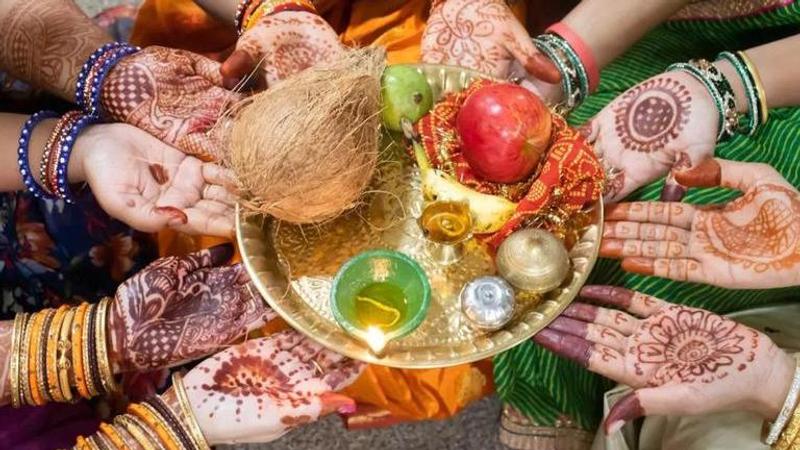Published 22:35 IST, August 31st 2023
Kajari Teej 2023: Date, puja shubh muhurat, history, significance of the festival
Kajari Teej falls on Tritiya Tithi of Krishna Paksha in the Bhadrapada month. Learn about the history, significance, shubh muhurat and date of the festival.

As the vibrant hues of autumn start to adorn the landscape, Hindu women are eagerly preparing to celebrate the festival of Kajari Teej. This revered occasion, also known as Kajali Teej, Kajri Teej or Boorhi Teej, holds a special place in the hearts of devotees of Lord Shiva and Goddess Parvati. Falling on the Tritiya Tithi of Krishna Paksha in the Bhadrapada month, this festival is a time of devout worship, fasting and vibrant celebrations.
2 things you need to know
- Observers fast, worship Lord Shiva and seek his divine favour.
- The festival is marked by married and unmarried women seeking harmony and love.
Kajari Teej 2023: Date, muhurat and significance
Kajari Teej follows fifteen days after Hariyali Teej and falls three days after Raksha Bandhan, heralding its arrival with a spiritual significance that culminates five days before Krishna Janmashtami.
This year, devotees will celebrate Kajari Teej on September 2. The Tritiya Tithi of Krishna Paksha will commence at 11:50 pm on September 1 and conclude at 8:49 pm on September 2. The auspicious time for the Kajari Teej puja is from 7:57 am to 9:31 am on September 2, with another opportune window from 9:45 pm to 11:12 pm.
(Kajari Teej is celebrated on 2nd September 2023 | Image: X)
Kajari Teej 2023: Significance and history
The trio of Teej festivals, including Hariyali Teej, Hartalika Teej and Kajari Teej, holds a special significance, especially for married women observing day-long nirjala fasts. Primarily celebrated in North Indian states like Rajasthan, Uttar Pradesh, Madhya Pradesh and Bihar, Kajari Teej has women praying to Lord Shiva and Goddess Parvati for their husband's well-being. Unmarried girls also partake in these rituals to seek a compatible life partner.
According to Hindu mythology, the devout penance of Goddess Parvati to win the heart of Lord Shiva is deeply intertwined with the essence of Kajari Teej. The day symbolises the blessings of the divine couple, a beacon of harmonious matrimony and the fervent belief that fasting and worship can bring about marital bliss.
Rituals and celebrations
The festivities of Kajari Teej are steeped in traditions that reflect devotion and cultural richness. Married women sing folk songs about temporary separation from their husbands, observe rigorous nirjala fasts and perform pujas to seek divine blessings. The day starts with a purifying bath, followed by adorning new traditional attire and jewellery. Clay idols of Lord Shiva and Goddess Parvati are reverently placed on red cloth, with offerings of aarti, incense and lamps.
Devotees offer sixteen items associated with married women to Goddess Parvati, while presenting bel leaves, cow's milk, Ganga water and dhatura to Lord Shiva. The narrative of Shiv-Gauri's divine union is also shared, further deepening the spiritual connection of the festival.
As Kajari Teej approaches, the air is filled with anticipation, devotion and the beauty of traditions passed down through generations. This sacred festival not only celebrates the divine love of Lord Shiva and Goddess Parvati but also resonates with the hopes and prayers of married and unmarried women for a life brimming with happiness and companionship.
Updated 22:35 IST, August 31st 2023




